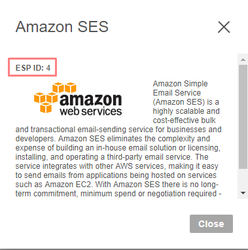Table of Contents:
Table of Contents minLevel 2
Testing Environment
Does Ongage have any type of testing environment for the purposes of testing changes without interfering with production lists, campaigns and events?
...
See our Getting Started Guide → Import Contacts, Add Lists, Migrate into Ongage for more info about adding lists.
Email Message ID
- Email messages are the contents (typically HTML email messages) you send to the contacts in your list.
- Every email message has a unique ID that you can find in the ID column on the Content → Email Messages page of the list.
- It's helpful to use this unique ID when communicating with support.
Campaign ID aka CID
- The CID is a unique ID associated with each campaign in the Ongage platform.
- You can find the CID in the Campaigns → Campaigns Overview page, under the CID column (the CID can found on other screens as well such as the Analytics → Aggregate report).
- It's helpful to use this unique ID when communicating with support.
ESP Connection ID aka ECID
- ECID (short for ESP Connection ID): is the unique number ID given to each ESP connection in your Vendor Settings → My Connections dashboard
- It's helpful to use this unique ID when communicating with support.
- You'll also need this ECID if you're doing a Transactional mailing via the API.
ESP ID
- The ESP ID (esp_id) is an internal unique Ongage ID that Ongage has assigned to each SMTP / ESP / SMS vendor.
- You can find ESP ID by going to Vendors Settings → ESP/SMTP Vendors, and clicking on the name of anyone of the vendors there, e.g.,
- Typically the ESP ID has no usage (except maybe in some unique API use-case), and is just an internal ID Ongage uses to uniquely identify different vendors.
- It does appear in the Contact Activity Report (see Analytics), though in the future it will be replaced with the name of the vendor instead of the ID.



